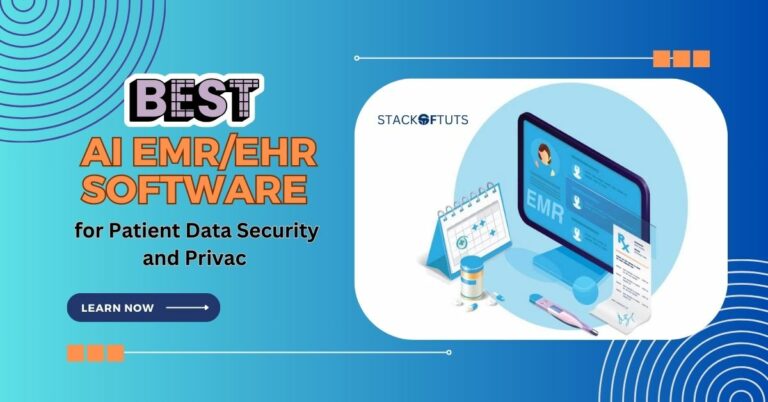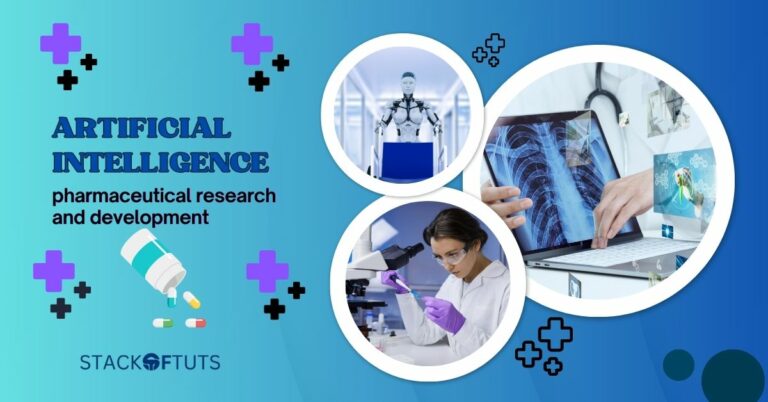
Radiology, which uses imaging to diagnose and treat disease, has advanced greatly in the past decade. This field is on the edge of a historic transformation thanks to the development of artificial intelligence (AI). Let’s take a closer look at how AI is Transforming Radiology by bringing about improved accuracy, efficiency, and focus on the individual patient.
Artificial Intelligence in Radiology

Medical imaging is used in radiology to diagnose and treat disorders. With AI, radiology has changed drastically. Radiologists can automate operations with AI, enhancing productivity and accuracy. AI-powered image analysis techniques are revolutionizing radiology. These algorithms can automatically recognize and measure tumors, fractures, and other diseases in medical images. This has improved diagnosis speed and accuracy, saving lives.
AI has also helped radiologists automate image segmentation, registration, and fusion. This has increased medical picture interpretation efficiency and accuracy. Predictive models are another way AI is changing radiology. These models can find patterns and predict outcomes in massive datasets. They can predict a patient’s disease risk, for instance.
For a complete guide also read about “The Impact of AI in Radiology” Dive into this link for exclusive insights and captivating discoveries!
How important is radiology in making medical decisions?

Radiology is crucial to medical decisions. X-rays, CT scans, and MRI scans can reveal a patient’s organs and tissues. Doctors can diagnose, analyze, and treat diseases using this information. Radiology diagnoses cancer, heart disease, stroke, and pneumonia. Radiology can track illness development and therapy response.
A radiologist may examine an X-ray to see if a patient has shattered bones. Radiologists can check CT scans for tumors and blood clots. Biopsies and operations are guided by radiology. A radiologist may utilize an X-ray to guide a tumor needle biopsy.
Here are some medical choices made using radiology:
- A radiologist may check a chest X-ray for pneumonia.
- A radiologist may examine a patient’s brain CT scan for stroke.
- A radiologist may examine a knee MRI for a damaged ligament.
- A radiologist may utilize an X-ray to guide a breast tumor needle biopsy.
- A radiologist may utilize a CT scan to guide stent insertion in a coronary artery.
AI is Transforming Radiology. Radiology helps doctors make decisions and provide high-quality care.
Will AI replace Radiologists?

Radiologists are unlikely to be replaced by AI. While still in development, AI cannot yet match radiologists’ skills and judgment. Large medical imaging datasets are expensive and time-consuming to obtain for AI algorithm training.
AI will likely become more essential in radiology over time. AI can improve radiologists’ efficiency and accuracy. It can also extend radiological services to underdeveloped communities.
Here are some specific ways that AI is being used to improve radiology today:
- AI-powered algorithms can help radiologists spot diseases and abnormalities faster and better.
- AI-powered algorithms can help radiologists distinguish diseases and improve treatment.
- AI-powered algorithms can automate image segmentation and report production, allowing radiologists to focus on more difficult duties.
- AI-powered algorithms can give remote radiology to underprivileged patients.
The Evolution of Diagnostic Procedures
Historically, radiology relied heavily on the human eye and the radiologist’s interpretation. Now, with the integration of AI algorithms, this process is becoming more streamlined and accurate. AI can identify abnormalities in images faster than the human eye, thus reducing the chances of oversight or misinterpretation.
Improving Accuracy with Deep Learning
One of the prominent AI technologies making waves in radiology is deep learning. Deep learning algorithms, inspired by the neural structures of the human brain, can be trained on vast amounts of data. Once trained, these algorithms can detect patterns and anomalies in radiological images with astonishing precision. For conditions like lung cancer or brain tumors, early and accurate detection can make a significant difference in patient outcomes.
Enhancing Workflow and Productivity
Besides diagnostic precision, AI brings about efficiency in the radiological workflow. Automated tools, powered by AI, can prioritize urgent cases, thus ensuring timely intervention. By handling routine and repetitive tasks, AI allows radiologists to focus on more complex cases, enhancing productivity and reducing burnout.
Personalized Patient Care
AI’s potential extends beyond diagnosis. By analyzing a patient’s history, genetics, and lifestyle alongside their radiological data, AI can offer tailored treatment recommendations. This level of personalization ensures that patients receive care that is best suited to their unique needs.
Reducing Radiation Exposure
AI’s capabilities also play a vital role in minimizing radiation exposure. Through sophisticated algorithms, AI can produce high-quality images with lower radiation doses. This is especially beneficial for patients who require frequent imaging, ensuring their safety without compromising on diagnostic quality.
Enhanced Training for Radiologists
AI doesn’t aim to replace radiologists but to empower them. With AI tools, budding radiologists can receive feedback in real time as they interpret scans, enhancing their learning process. The blend of human intuition with AI-backed insights can transform the landscape of radiological diagnostics.
Challenges and The Road Ahead
While AI’s contributions to radiology are monumental, the integration of this technology is not without challenges. Concerns about data privacy, the need for extensive training data, and ensuring the ethical use of AI are paramount. However, with collaboration between tech experts and medical professionals, the future of radiology with AI looks promising.
FAQs
While AI enhances radiology’s efficiency and accuracy, human expertise remains vital. Radiologists and AI will likely collaborate, not replace each other.
AI in radiology assists in precise image interpretation, detects anomalies swiftly, and aids in automated report generation.
AI in radiology promises faster image processing, personalized diagnostics, and predictive analysis. Its growth could redefine patient outcomes and streamline healthcare.
AI in radiology assists in precise image interpretation, detects anomalies swiftly, and aids in automated report generation.
Conclusion
In conclusion, AI is Transforming Radiology which is undeniable. From enhanced diagnostic accuracy to personalized patient care, AI is setting new benchmarks in the field. As we move forward, it is essential to harness this technology responsibly, ensuring that it augments the capabilities of radiologists and leads to improved patient care.
Thanks!





